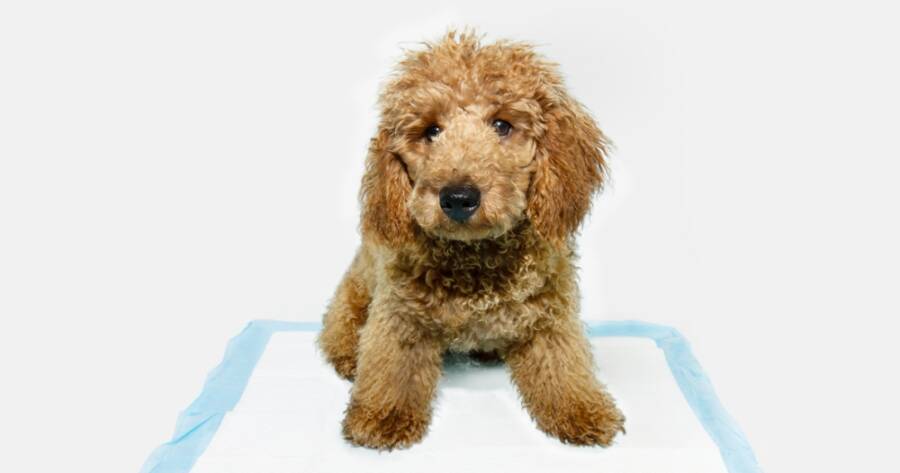Potty training a puppy in an apartment brings unique challenges. Without a backyard or easy outdoor access, pet owners often turn to indoor potty solutions like training pads or grass pads. Both are designed to make cleanup easier and provide your pup with a designated place to go. But how do you know which one is right for your space—and your dog? Understand the pros and cons of each to help you make the best decision for your growing puppy.
Understanding Training Pads
Training pads, often called pee pads, are disposable absorbent mats with waterproof backing. They’re typically made with layers that trap urine and reduce odor. Many brands also include scent attractants to encourage puppies to use the pad consistently.
These pads are a popular choice for new puppy owners, especially in apartments, because they’re convenient, lightweight, and easy to toss out after use. Some even come with adhesive corners to keep them in place on smooth floors.
Training pads are usually placed near a door, in a laundry area, or on a balcony, and they’re best for small to medium-sized dogs. They’re commonly used during early training or for dogs that will need indoor potty options long term.
The Appeal of Grass Pads
Grass pads are either real sod or synthetic turf placed over a drainage layer or tray. They mimic the feel and smell of real grass, giving dogs a more natural surface to do their business. For apartment puppies, grass pads can bridge the gap between indoor and outdoor potty habits.
Some grass pads use real soil and grass and need to be replaced regularly, while others are washable turf mats that sit on top of a reusable tray. These pads are often used on balconies or in designated potty areas inside the home.
Puppies that will eventually transition to going outdoors may adapt more easily if they’ve been using grass pads from the start. The surface feels familiar, and the scent of grass can act as a built-in signal to go potty.
Comparing Odor and Cleanliness
When it comes to odor control, both pads have pros and cons. Training pads are designed to lock in moisture and reduce smell, but if they’re left out too long, they can become noticeable quickly. Real grass naturally absorbs odors better than synthetic materials, making it a strong option for keeping your apartment fresh—at least for a few days.
Synthetic grass pads can trap odors if not cleaned frequently, while real grass must be replaced every one to two weeks depending on usage. Pee pads, on the other hand, need to be thrown out after each use or changed several times a day for multiple dogs.
For long-term indoor use, grass pads may require more maintenance, but they tend to offer better odor control when managed properly.
Cost, Convenience, and Sustainability
In terms of convenience, training pads are easy. You use one, toss it, and replace it. They’re lightweight, low-maintenance, and easy to pack if you’re traveling with your dog. But over time, the cost of disposable pads can add up—especially if your puppy needs several a day during training.
Grass pads, especially reusable turf options, may involve a higher upfront investment, but they can be more economical long term. You’ll need to clean the tray regularly and rinse or replace the turf, but you won’t be throwing away multiple items each day. For pet owners concerned with environmental impact, grass pads (especially reusable ones) may be a better fit.
From a sustainability standpoint, disposable pads create more waste. Reusable grass pads or compostable real grass trays offer a more eco-friendly solution.
Which Is Better for Training?
The right choice often depends on your goals. If you’re planning to eventually transition your puppy to outdoor potty breaks, a grass pad may offer a smoother switch. Puppies that grow used to the feel of grass are more likely to understand outdoor potty cues later.
However, if your puppy will need a long-term indoor potty option due to your lifestyle or mobility, training pads may be the easier and more manageable solution. Some pet owners even start with pee pads and move to grass pads later as their dog matures.
Whichever option you choose, consistency and positive reinforcement are key. Puppies need clear signals, praise, and routine to build good habits.
Finding What Works for Your Pup and Your Space
Choosing between training pads and grass pads isn’t a one-size-fits-all decision. Each option has strengths, depending on your puppy’s behavior, your apartment setup, and your future potty training goals. Training pads offer ease and quick cleanup, while grass pads feel more natural and support outdoor transition.
Think about what makes sense for your lifestyle and what your puppy responds to best. With patience, routine, and the right tools, you can raise a well-trained dog—even without a backyard.

